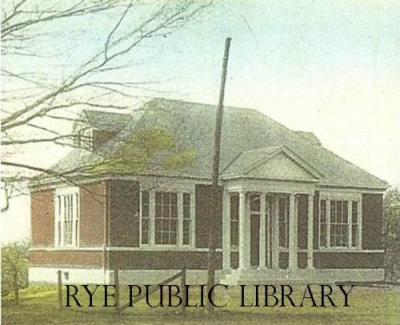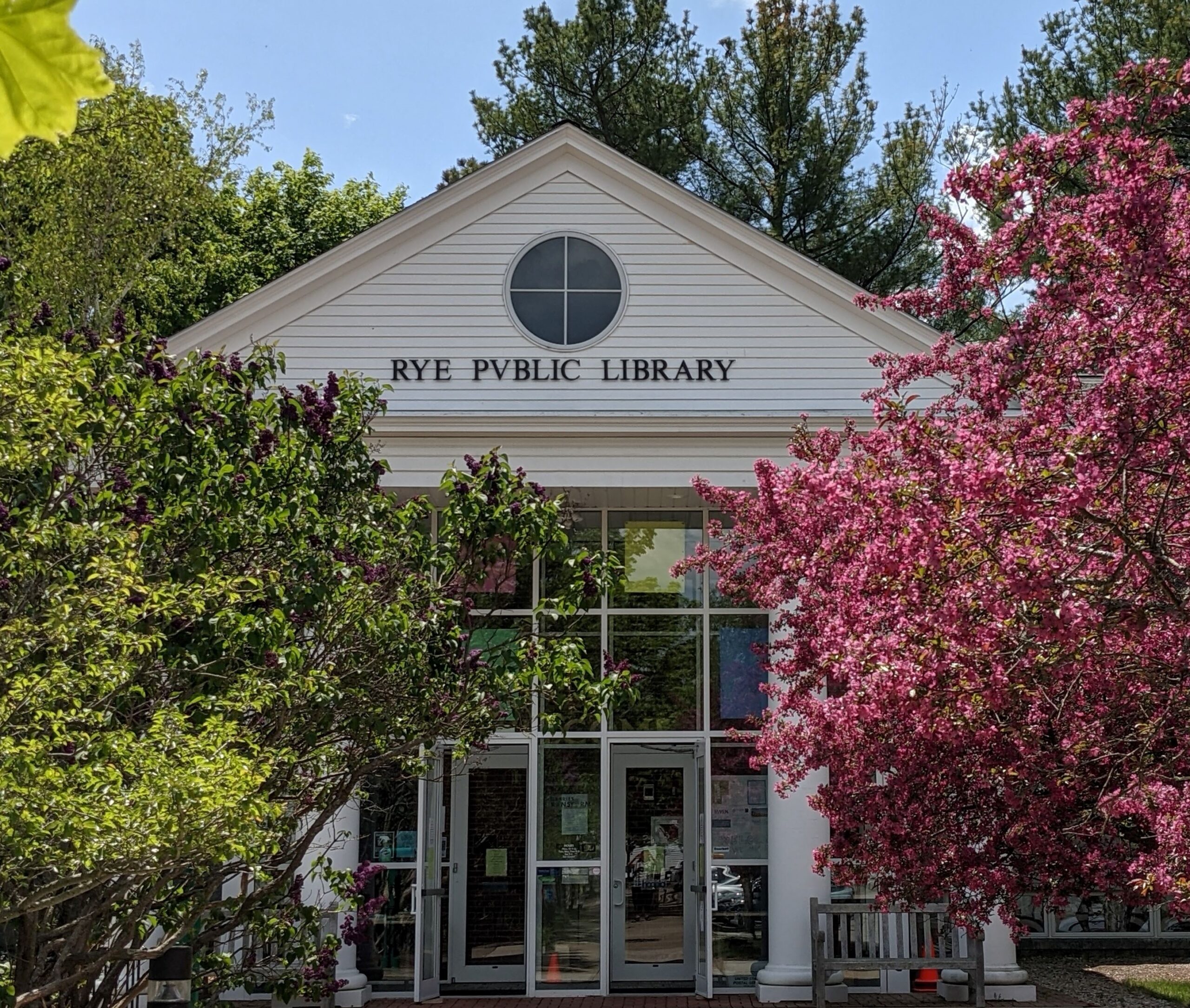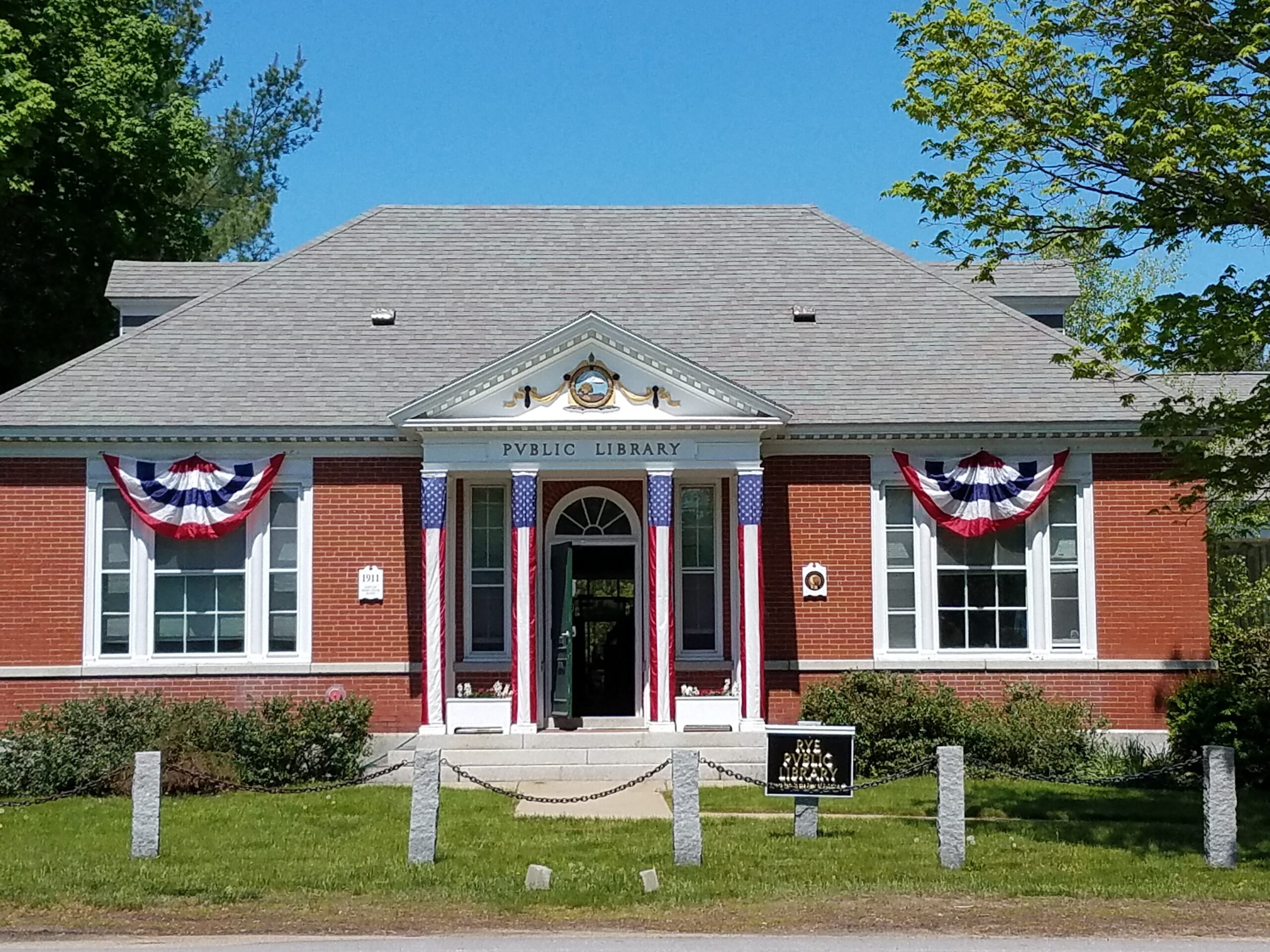Compiled and Written by Alex Herlihy, Town Historian. ©2023 Visit his website ryehistoryrocks.com to learn more about the library and the town of Rye, NH. Edited for space by library staff.



In 1882 the Sleeper family announced a bequest to the town to build a library for $6,000, which, if not used, would be split between the two churches. A special town meeting was held in August and most towns people, thinking it would pass easily, were busy getting in the hay and did not vote. But the church folks got their numbers out and the library proposal was defeated. The majority were up in arms and demanded a re-vote which was overwhelmingly in favor of the library. As we would expect this vote was challenged and the dispute ended up in court. When it was finally decided in favor of the churches several years later, most of the money had been absorbed in legal costs so only a few hundred dollars was left. Such is the fate of those who do not heed the maxim: “Assume nothing, every vote counts.”
Mary Tuck Rand attended Rye Center school in the 1840s and credited her English teacher for inspiring her love of reading. She had two siblings, but none of them married. Mary Tuck Rand was witness to the debate which lost Rye’s chance at a library in the 1880s, and by 1909, she had outlived her two brothers. With no immediate family to whom to leave her inheritance, and with a love of literature, Mary approached the newly-formed library trustees (Charles Remick and Fred Parsons) in 1909 with the offer of land, and in 1910 she made it official. She would donate her lot opposite the church on the hill and give $7500 for the construction of a new library. It was designed by a Boston architect and groundbreaking occurred in August, 1910. The builder was Charles Rand who had made the lowest bid. On June 22, 1911, there was a dedication ceremony of the new library at the church. Among the speeches that day was that of Mary Tuck Rand herself. What follows is an excerpt:
“Fellow citizens, one and all: I feel very, very thankful for what I have seen and heard; the eloquent speeches; for seeing the erection of the building going on from day to day from the foundation to the finish, going higher and higher, adding new beauty at every step. I am thankful that I can do this, having been left alone. All the household having passed away and left their effects with me gave me the opportunity. By their industry, sobriety and honesty, they had laid by something against the time of need. They took no holidays, all were workdays. I will raise a monument, a memorial to their worth and goodness. I wish it to do some good and be of much benefit, a storehouse for books, for information and knowledge, a mine of good, a fountain of help, lasting. I hope it will help you gloriously onward and upward through the journey of life and also those following after. This is my sincere wish. Please accept this library building and site from me.”
-Mary Tuck Rand, 1911
The first expansion off the rear of the building in 1969 was greatly needed. It expanded book shelf and office space and on the new lower level a public meeting room and storage area, the same lower level where the community room is today. The largest expansion of the library occurred in 1997 and required unending hours of work for the trustees. It was funded partly by tax payers and a major fund-raising campaign yielded some very generous donors to fund the rest of the addition. A larger community room was created as well as a new children’s room and an adjacent one for teens. On the upper level it was positively expansive, with several sitting areas, tables and chairs and more office space. The large open space by the library check- out desk created room for live musical performances. Adjacent to that was the glassed in New Hampshire Room, providing a small meeting space and housing artifacts, Rye historical records and histories as well as many regional and state wide secondary sources.
In 2011 the library celebrated its centennial with a full day of activities. RHS created a power point program entitled “Rye in 1911” which used historic photos to depict how the town looked at that time. Included in the program was RPL’s very big “twin sister” library, the one on 5th avenue and 42nd street in New York City which also opened in 1911. A big book sale kept bibliophiles busy and the museum was opened too. RJH students performed a drama at the library based on the lost library of the 1880s. There were activities for children all day with refreshments. The evening concluded with the arrival of the Leftist Marching Band playing folk tunes and rousing patriotic music.
The Rye Public Library today is a true community center, the main gathering place for Rye residents. The library’s vision for the future of its Rye Center location could further enhance its value for the town.
